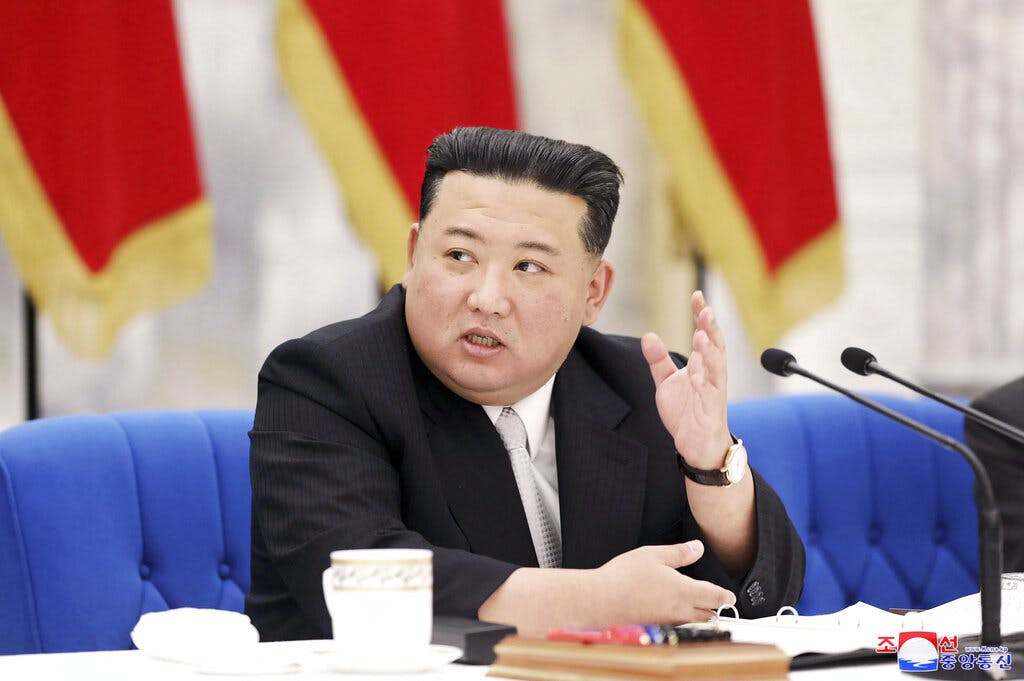North Korea Nukes Only Part of the Threat, New Study Says
It warns of cyber weapons and electromagnetic pulse attacks, and says America must have the will to respond to threats.

SEOUL — North Korean threats against America extend far beyond the dozens of nuclear warheads that the North is known to have produced. That’s according to a new study just released here by the RAND Corporation and South Korea’s Asan Institute.
It says that “no tool in North Korea’s arsenal has the reach and diversity of potential impact as its offensive cyber capabilities” targeting “computers, the processes they control, and the data they store.”
Cyber warfare may not appear so deadly as deployment of weapons of mass destruction, ranging from nuclear to biological and chemical, but “this toolkit is among the most useful, asymmetric, and potentially strategically highly effective North Korean capabilities,” the report says.
It’s “a weapon,” the report says, that North Korea’s leader, Kim Jong-un, “has reportedly described as the regime’s ‘all-purpose sword.’”
At the same time, the report rates the North’s chemical and biological weapons program as potentially just as devastating as its nuclear weapons, and portrays American and South Korean forces as almost at the mercy of North Korea if Mr. Kim were willing to risk the counterattack that might wipe out his regime.
South Korea and America “do not appear to be adequately prepared to counter the damage that would be done by North Korean CW (chemical warfare) use in a major war started by the North,” the report says.
The report makes note of VX nerve agent, the weapon that was smeared on the face of Kim Jong-un’s older half-brother, Kim Jong-nam, as he was on his way to board a plane at the Malaysian capital in February 2017.
“A kilogram of VX would be sufficient to kill or seriously injure 200,000 or so people,” the report says, though “that level of effects would require equal distribution of just the right amount of VX to each of those people.”
A long-time RAND senior defense analyst, Bruce Bennett, in an interview here after release of the report, said North Korean defectors had reported the North was testing the effectiveness of VX agents and other chemical and biological weapons in experiments on people.
The report recommends a modulated response, combining toughness with incentives to come to terms. South Korea and America should “be clear that North Korean provocations below the minimum redlines could also lead to real ROK (Republic of Korea)-U.S. response,” it says. “Otherwise, the North might feel safe to challenge the ROK-U.S. with provocations below the minimum redlines.”
“We were pretty strong about counter-force,” Mr. Bennett says. “Our objective was to say, carrot and stick.”
Mr. Bennett explains that the report “speaks to multiple audiences,” ranging from those demanding the North denuclearize to others advocating a soft-line approach beginning with an end to sanctions imposed on the North for its nuclear and missile tests.
The report acknowledges that information on the North’s biological weapons program is particularly difficult to obtain or confirm, but said the North has focused on anthrax, a bacterium that can kill or disable thousands as easily as chemical weapons.
“Analysis by RAND has shown that the amount of anthrax that North Korea would need to conduct significant attacks is not large,” the report says, estimating that tens of thousands would die in “a major outdoor attack on a large urban area” and thousands more would be disabled. “Due to the delay in recognizing that an attack had occurred,” it says, “finding specific evidence that North Korea was behind the attack might be difficult unless the attacker was somehow ‘caught in the act.’”
Just as alarming as biological and chemical weapons — but not widely known — is the North’s research into generating electrical fields known as electromagnetic pulse, capable of “jamming attacks on various South Korean targets” via nuclear explosions high in the atmosphere.
“When North Korea had only five or ten nuclear weapons, it might have seemed unlikely that North Korea would devote several of them to conduct EMP attacks,” the report says. “With the much larger arsenal estimated today, it is not difficult to imagine that North Korea might devote a small number of nuclear weapons for EMP attacks.”
The report concludes with an alarming forecast: “North Korean provocations pose a risk of escalation to war, including WMD use. North Korean provocations such as missile and nuclear weapon tests facilitate the growth in North Korean WMD threat.”
How to deter the threat without going to war? “To deter North Korea,” the report says, Seoul and Washington “must communicate to the North which of the most serious provocations are unacceptable and the potential consequences that would be imposed for those provocations.”
The report warns: “These consequences cannot be idle threats — the ROK-U.S. must have the will to execute them, or future deterrence would be undercut.”

